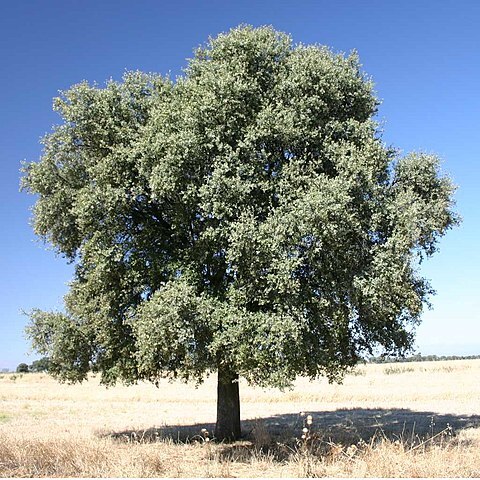Trees or rarely shrubs, monoecious, evergreen or deciduous. Stipules usually early deciduous. Leaves alternate, sometimes false-whorled in Cyclobalanopsis. Inflorescences unisexual or androgynous with female cupules at the base of an otherwise male inflorescence. Male inflorescences a pendulous head or erect or pendulous catkin, sometimes branched; flowers in dense cymules. Male flower: sepals 4-6(-9), scalelike, connate or distinct; petals absent; filaments filiform; anthers dorsifixed or versatile, opening by longitudinal slits; with or without a rudimentary pistil. Female inflorescences of 1-7 or more flowers subtended individually or collectively by a cupule formed from numerous fused bracts, arranged individually or in small groups along an axis or at base of an androgynous inflorescence or on a separate axis. Female flower: perianth 1-7 or more; pistil 1; ovary inferior, 3-6(-9)-loculed; style and carpels as many as locules; placentation axile; ovules 2 per locule. Fruit a nut. Seed usually solitary by abortion (but may be more than 1 in Castanea, Castanopsis, Fagus, and Formanodendron), without endosperm; embryo large.
Trees or shrubs, mostly monoecious, deciduous or evergreen; buds enclosed by scales. Leaves alternate, rarely whorled, simple, entire or lobed, pinnately veined, petiolate; stipulate, stipules caducous. Inflorescence axillary, cymose, usually with flowers in reduced dichasia and the dichasia organised in a catkin or spike, bracteate. Flowers small, inconspicuous, unisexual; perianth a single connate whorl, usually 6-lobed, sometimes obsolete. Male flowers solitary or in dichasial clusters; stamens 4–40, usually 6–12; anthers dehiscing by longitudinal slits; pistillode sometimes present. Female flowers solitary or in dichasial clusters subtended by an involucre of bracts which develop into a cupule; staminodes present or absent; ovary inferior, of 2–12 carpels each with a distinct style; ovules 2 per locule, pendulous; placentation axile. Fruit a nut (or nuts) subtended by a cupule. Seed 1, without endosperm.

